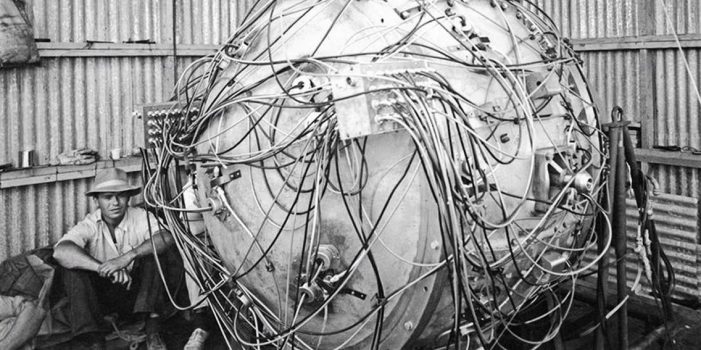Email a copy of 'Preparedness Notes for Thursday — July 16, 2020' to a friend
6 Comments
- Ad Rural Home Defense: non-fiction by author Don ShiftA cop's guide to protecting your rural home or property during riots, civil war, or SHTF. A sequel in the Suburban Defense series.
- Ad Ready Made Resources Anytone Termn-8RCall us if you have Questions 800-627-3809


They open the White Sands Missile Test Range in NM twice a year for one day. I had the opportunity to go, and it was worth the drive. The tour guide said the green glass was a couple of feet thick at the detonation point.
I pulled 2 30 day rotations there. I got to see many things. It’s a great piece of history. That desert is tough and I enjoyed everything I learned from the military exercise, the animals and the people.
In looking at the link provided about Hugh John McCall, there are a number of highlighted names that provide more information about the individuals. What is surprising is the number of US and Canadian members of the unit, along with those from other countries.
Many years ago I read a book about the building and testing of the bomb at White Sands. One incident I remember from the book is that they had some of the U-235 on a lead table covered by a lead “bowl”. There were 3 or 4 scientists standing around and one used a knife or something to pry up the lead cover a few inches which caused a buzzing sound and he immediately dropped it back in place. Maybe two seconds of exposure max and he died within two weeks from radiation poisoning. I think one of the others present died within a few months as well.
My cousin was a radio operator in WW II and was stationed on Tinian when the bomb was delivered and loaded on the Enola Gay for delivery to Japan. He remembers that the had to dig a hole in the runway but they told everyone it was for installing a large camera on the plane for reconnaissance. I specifically asked if he had heard anything on the radio transmissions or otherwise that in retrospect gave any indication of what was going on. He said no one knew anything about it, no hint of what was planned.
Your account about the U-235 Uranium sounds like it was based upon a real occurrence. Events are discussed and written about by people with personal knowledge. Sometimes the observation and recall is similar to witness accounts of accidents. There are accounts about a similar event. =
Wikipedia has an article about Louis Slotin, =
“As part of the Manhattan Project, Slotin performed experiments with uranium and plutonium cores to determine their critical mass values. After World War II, Slotin continued his research at Los Alamos National Laboratory. On 21 May 1946, Slotin accidentally began a fission reaction, which released a burst of hard radiation. Slotin was rushed to the hospital, and died nine days later on 30 May, the victim of the second criticality accident in history, following the death of Harry Daghlian, who had been exposed to radiation by the same core that killed Slotin.
Slotin was hailed as a hero by the United States government for reacting quickly enough to prevent the deaths of his colleagues. Some physicists argue that this was a preventable accident. The accident and its aftermath have been dramatized in several fictional and non-fiction accounts.”
….
Atomic Accidents = atomicheritage[dot]org on June 4, 2014.
“On Tuesday, May 21, 1946, Louis Slotin was demonstrating a criticality experiment that involved gradually bringing together two beryllium-coated halves of a sphere that held plutonium at its core- without allowing the halves to touch- and recording the increasing rate of fissioning. Then, in one fateful moment, the screwdriver slipped.”
****
The Third Core’s Revenge, August 16, 2013. blog[dot]nuclearsecrecy[dot]com
****
Pictures of the ’round bowl’ are at all three sites.
****
****
Sometimes very smart people have a ‘screw loose’ in their brain. … Something to remember, when politicians brag about their elite school education, rather than their real world accomplishments. [Did they gain their wealth through payoffs, or did they have a real Tax-Paying job in the private sector.]
For prepping, actual >skills are better than parchment degrees.
If you are in Las Vegas, make sure to visit the Museum of Atomic Testing. I was there for work and saw an ad for it. I thought it would be a tourist trap like much of Las Vegas. When I got there, I found out it is a joint operation of the Bechtel Corporation, the Department of Energy, and the Smithsonian Institution. A first class operation where you can learn a lot.